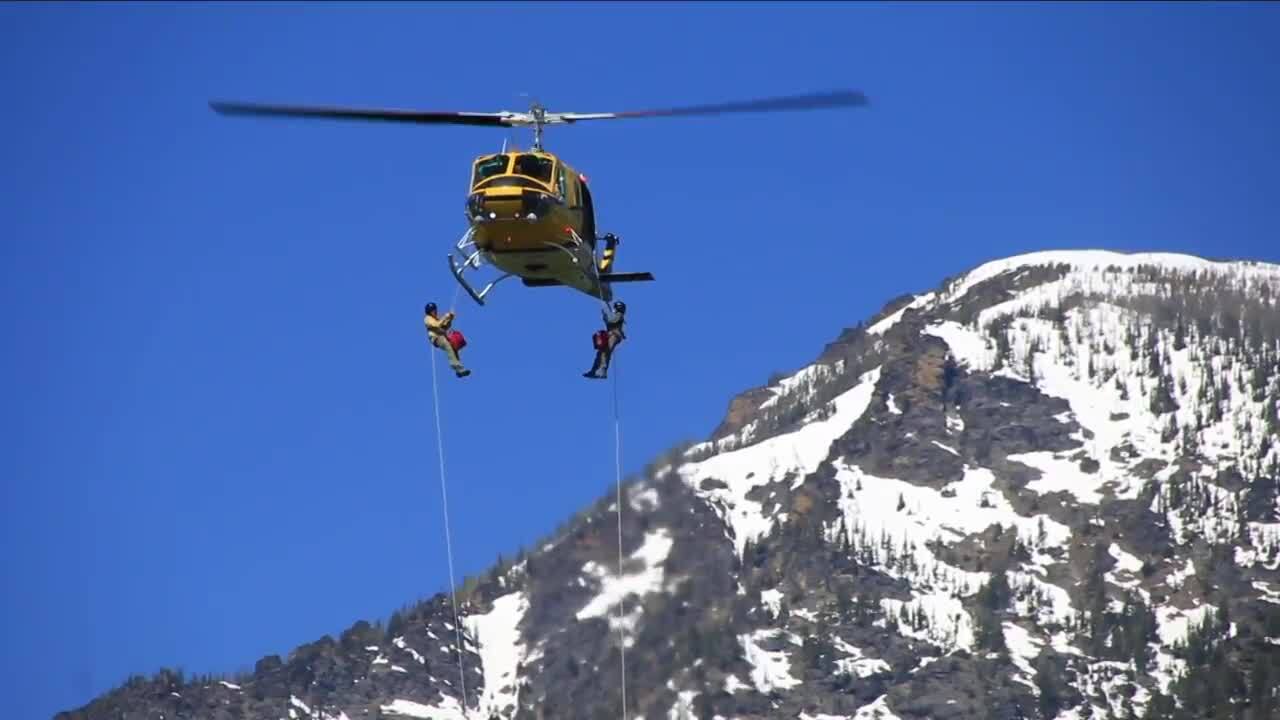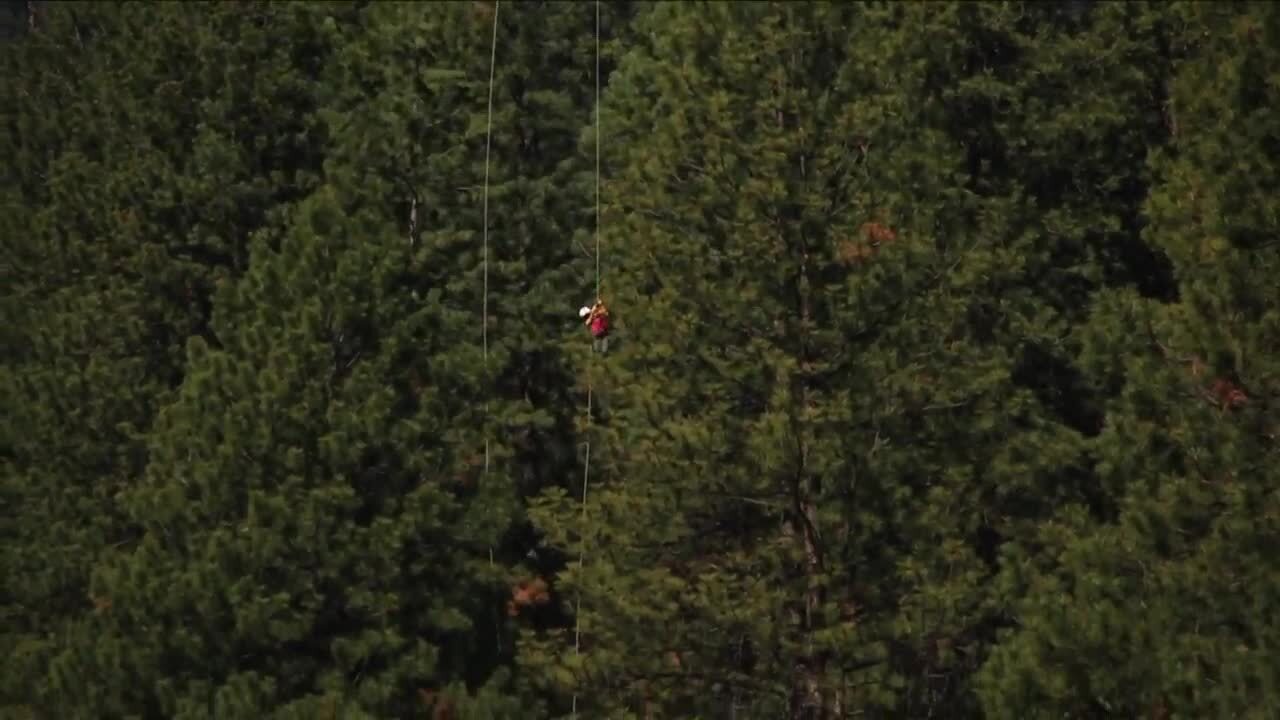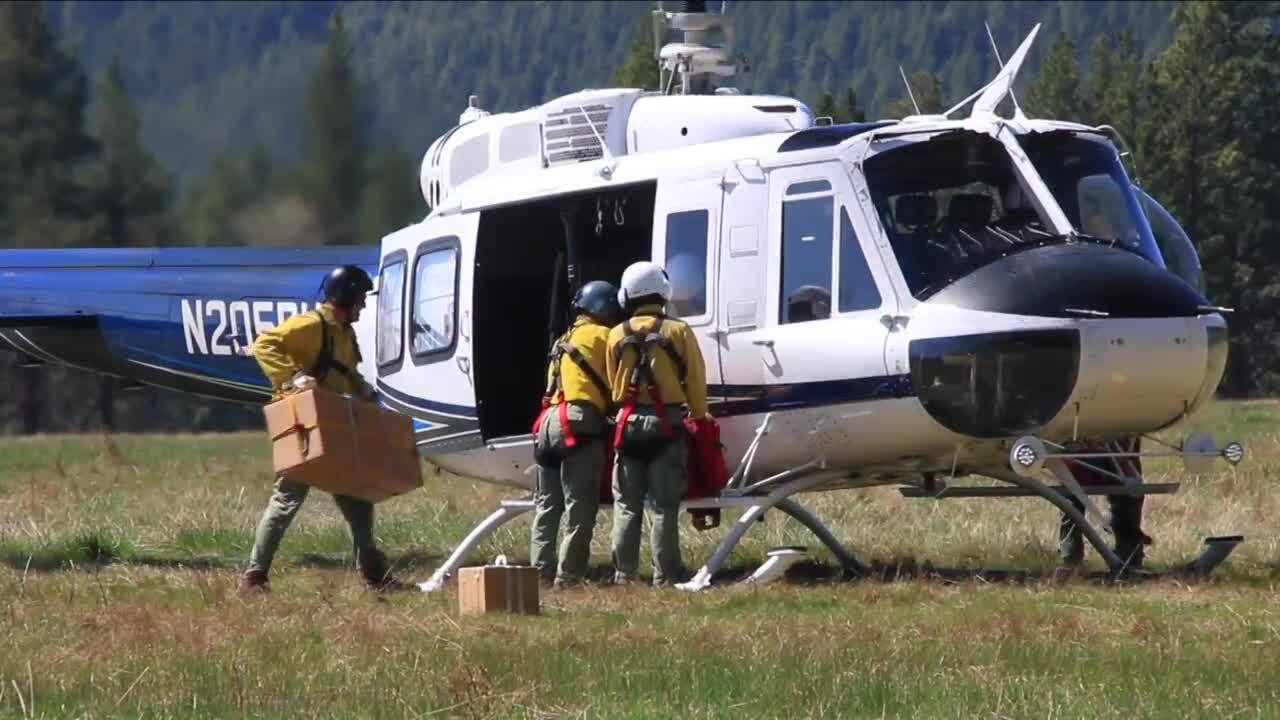STEVENSVILLE — The sound of helicopters in the Bitterroot often signals the beginning of another fire season but on Thursday, it marked the location of critical training to keep those fires under control.
For the first time ever, U.S. Forest Service rappel teams are using Western Montana locations to prepare for the upcoming fire season.
Beginning with groundwork in Missoula, the specialized firefighters from all over the Northwest went airborne Thursday, evaluating a new training location on private land just south of the Bass Creek Recreation Area.

“Back in the 60s and 70s they would have to run a string of mules and supplies and it might be a week before they actually got to the fire," explained Casey Woodward, who works out of the Wenatchee, Washington firebase for the Okanogan-Wenatchee National Forest. "So of course the helicopter is quick. It can be precise because it can hover. And our bread and butter is really accessing remote small, especially lightning caused fires.”
That mission changes with a large fire, helping with backcountry access for larger teams.
“We'll rappel in and cut out a helispot. And then we’ll assist with flying the crews in and out of there. And so on on the big fires that's our primary thing," says Eli Beiler, who files with the Kootenai Rappel Crew out of Libby. "But most of what we do is on a small fires right when they start in some remote hard to access area. They'll put us in there and we can catch them when they're still small before they get big.”
Woodward says he likes the variety of the work, "every mission is unique and different, and of course, we get to travel from Alaska to Virginia, Texas and everywhere in between.”

Once the firefighters are safe on the ground, the attention turns to getting their supplies there. That includes the heavy items like chainsaws and fire tools, but also 24 hours of food and other supplies. That's critical in the Bitterroot Mountains, where teams can tackle dozens of smaller backcountry fires in a single season -- or an initial attack on backcountry fires that get big.
Both Woodward and Beiler were here during the massive 2017 season that resulted in the Lolo Peak Fire and others. Woodward recalls seeing more than a dozen fires at a time after several lightning moved through the Bitterroot Mountains.
“We staffed, I think, it was 20 or 21 fires in two or three weeks. All lightning fires, small fires, remote area, and working right with the Powell Ranger District Fire management officer there and kept us real, real busy. Of course it's remote. Big trees and all that stuff. So exactly where this specific tool is designed to help out.”

While you or I would be pumping gallons of adrenalin to do this, these pros wait to celebrate until they're safely on the ground.
“Like our job is, you know, super precise," Beiler told MTN News. "You do this at the right time. You can't look in the wrong direction like when you're in the helicopter hooking up your ropes. You know everyone has confidence in each other because each one does their job precisely right. So then you can't let any emotions get to you until after you're on the ground. And then it’s yes!!!”
The teams had to make three jumps, in addition to ground training this week to re-certify for the upcoming fire season.







